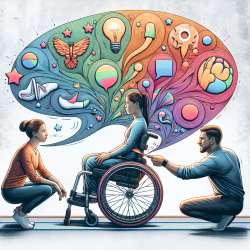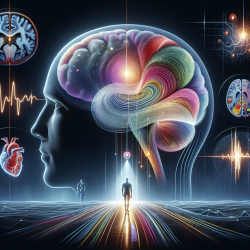In the field of special education, practitioners are constantly seeking ways to improve their skills and provide better support for their students. The research article titled "Factors Affecting the Use of Pain-Coping Strategies in Individuals with Cerebral Palsy and Individuals with Typical Development" offers valuable insights that can help practitioners enhance their approaches to pain management in students with cerebral palsy (CP). Here are some key takeaways and practical applications from the study.
Understanding the Research
The study explores the factors that influence the use of pain-coping strategies in individuals with CP and those with typical development (TD). It highlights the significant role of health status, emotional health, and speech ability in determining the effectiveness of these strategies. For individuals with CP, emotional health was found to be the best predictor of pain-coping strategy use, whereas for TD individuals, cognitive factors and pain were more influential.
Key Findings
- Individuals with CP reported a higher frequency of chronic pain and used pain-coping strategies more often than their TD peers.
- Health status was a crucial predictor for the use of pain-coping strategies in both groups, with different health attributes being relevant for each population.
- Emotional health was the most significant predictor for individuals with CP, while cognitive factors were more relevant for TD individuals.
- Speech ability was a common predictor for the use of pain-coping strategies in both groups.
Practical Applications for Practitioners
Based on these findings, practitioners can implement several strategies to improve pain management for students with CP:
1. Focus on Emotional Health
Since emotional health is a critical factor for individuals with CP, practitioners should incorporate activities and interventions that promote emotional well-being. Techniques such as mindfulness, relaxation exercises, and cognitive-behavioral therapy can help students manage their emotions and cope with pain more effectively.
2. Enhance Communication Skills
Given the importance of speech ability in pain-coping strategies, practitioners should work on improving students' communication skills. This can include speech therapy, the use of augmentative and alternative communication (AAC) devices, and encouraging expressive language development.
3. Tailor Interventions to Individual Needs
Recognizing that different factors influence pain-coping strategies in CP and TD individuals, practitioners should tailor their interventions to the specific needs of each student. This personalized approach can lead to more effective pain management and better overall outcomes.
4. Encourage Further Research
Practitioners should stay informed about the latest research in pain management and CP. Attending conferences, participating in webinars, and reading relevant publications can provide valuable insights and keep practitioners updated on new strategies and interventions.
Conclusion
By understanding and implementing the findings from this research, practitioners can enhance their skills and provide better support for students with CP. Focusing on emotional health, improving communication skills, and tailoring interventions to individual needs are key steps in promoting effective pain-coping strategies.To read the original research paper, please follow this link:
Factors Affecting the Use of Pain-Coping Strategies in Individuals with Cerebral Palsy and Individuals with Typical Development.










